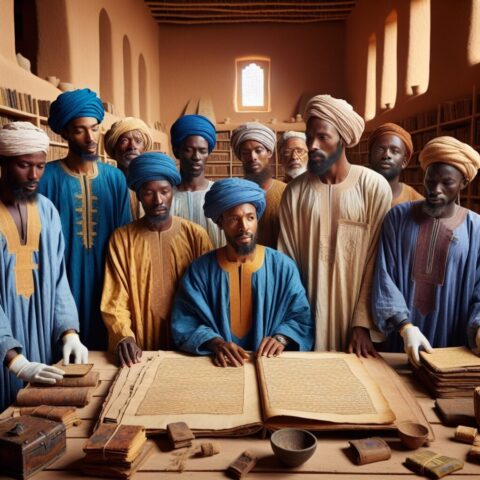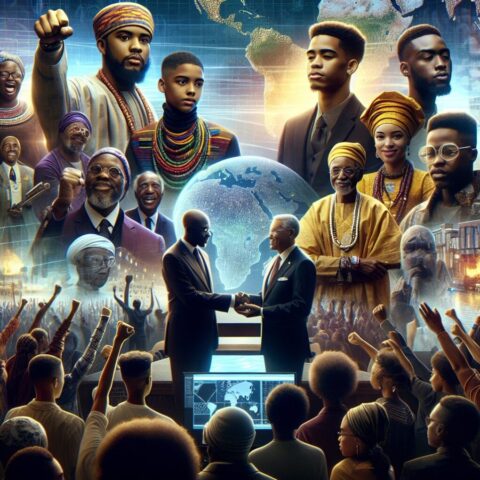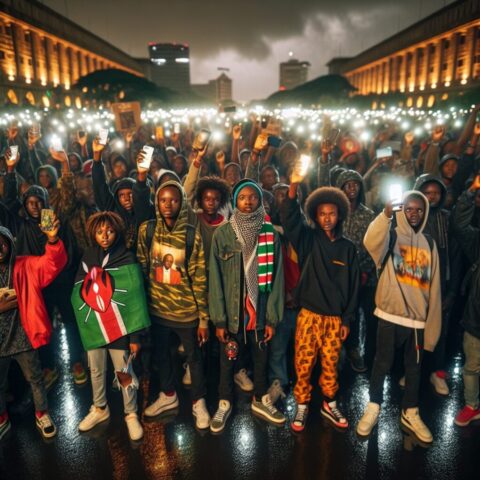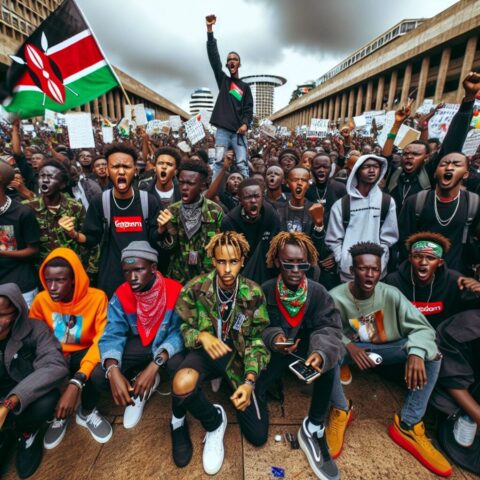By Lamont Lilly | With thanks to NewBlackMan (in Exile)
Monday, October 21, 2013.
On Friday, September 20th 2013, the Full Frame Theatre in Durham, NC hosted the premiere of a film called Let The Fire Burn by filmmaker and director, Jason Osder. It was supposed to premiere during the Full Frame Film Festival in April, but had to postpone its Durham debut until Full Frame’s Third Friday Free Film Series. For those of us who attended, it worked out perfectly. It was a packed house as no seat went unfilled for the 7:30pm screening. Little did we know, Durham was about to view the Philadelphia Police Department’s most heinous act of brutality in the city’s history.
Let The Fire Burn is a documentary about the bombing of an organization called MOVE and historical developments concerning the group’s political repression by the city of Philadelphia since 1978. Osder’s premiere of Let The Fire Burn was absolutely riveting.
Founded by John Africa in 1972, MOVE (originally, “Christian Movement for Life”) was a small group of Black Liberationists who prescribed to a strict cultural and religious philosophy. As detailed in Osder’s new film, from the initial stages of MOVE’s conception the Philadelphia police began keeping tabs on the group’s teachings and community activities.
Prior to the film’s core storyline of the 1985 bombing, Let The Fire Burn details the Philadelphia Police Department’s 1978 raid on MOVE’s Powelton Village home in West Philadelphia. Osder’s new documentary also shares the story of the MOVE 9, members of the organization who have currently been in prison for 35 years, some say on trumped up charges. Carefully cut, the footage is raw and very intense, penetrating the pores of struggle from the front row. Much of this modern day atrocity was captured on television and news circuits live. In addition to personal interviews, the bulk of Osder’s documentary is compiled from archival broadcasting. Osder was also able to gather home videos captured by community residents who were present at both raids. As Let The Fire Burn journeys from one decade to the next, viewers never lose a beat.
On August 8th 1978, the Philadelphia Police Department raided MOVE’s communal residence in Powelton Village on grounds of “conspiracy and suspicious activity.” During the raid, Philadelphia police officer, James Ramp was somehow shot and killed. Ballistics and state evidence pointed to friendly fire. Yet, nine MOVE members were convicted of the murder of one cop and sentenced to 30 to 100 years in federal prison. The sentencing judge would later admit that he had no idea who fired the fatal bullet. The few guns that were seized from MOVE’s home were later found to be inoperative by state investigators. Two days later, their Powelton Village home (along with critical evidence) was destroyed by city bulldozers as the group was forced to relocate.
Osder’s visual lens then takes you to the year 1985 to MOVE’s new address on 6221 Osage Ave. The group’s new location was in a quiet and cozy section of Philadelphia’s black working class district called Cobbs Creek. MOVE’s alternative lifestyle was a severe contrast to the neighborhood’s accepted norms and values. Complaints from neighbors reported profanity projected through loudspeakers, children exposed publicly nude, and vast amounts of unwanted varmints. Piles of compost and human waste also created disdain. In all fairness, MOVE members were also advocates of religious freedom, animal rights, gender equality and racial solidarity. Life and love were the cornerstones of the group’s existence. Nevertheless, the Philadelphia Police Department leveraged those concerns to wage war. Publicly, the decision to raid the group’s new location was to “clean up the building and arrest members who had outstanding warrants.” As Let The Fire Burn so vividly depicts, the Philadelphia Police Department’s assault on May 13th 1985, would mark an American tragedy.
That was the day over 200 Philadelphia police officers gathered outside of MOVE’s home on Osage Ave. That was the day over 10,000 rounds of police ammunition was used against unarmed citizens. Officers claimed they were fearful of MOVE’s massive collection of firearms and explosives. Yet, no automatic weapons were found in MOVE’s residence. Initially, officers deployed tear gas through broken windows. Then water, lots of it. One thousand gallons of water per minute were dispersed via the Philadelphia Fire Department from the roof and sides of the house. MOVE children were taken downstairs to the basement in search of safety. SWAT and Tactical Teams swarmed to exits like bees to warm honey. Supposedly, they were guarding against MOVE members trying to escape. Philadelphia police actually admitted to firing so much, they depleted their supply of bullets.
All of a sudden a bomb was dropped on MOVE’s roof from a police helicopter. Four pounds of C4 explosives were dropped on a row house full of people. Minutes later, another bomb was dropped. When informed about the developments of this violent occurrence, Philadelphia’s African American Mayor, Wilson Goode consciously responded on live video to “Just let the fire burn.” The water hoses that were once pumping thousands of gallons of water per minute were turned off. A raging fire that had already killed 11 people was intentionally allowed to spread. At first, it was the homes on MOVE’s immediate left and right that caught blaze. In just a few brief hours, 61 homes had been completely destroyed—memories and life-savings leveled to worthless ashes. Worst of all, Mayor Goode watched the destruction from his office television at City Hall.
Only two MOVE survivors exited the burning building – activist, Ramona Africa and a young boy named Birdie, whose testimony and childhood descriptions were documented throughout the film. The one officer who ran to safe Birdie and Ramona quit the Philadelphia Police Department in 1987. After his heroic feat, he was branded a ‘nigger lover’ by fellow officers and ostracized from the force.
Interestingly, after the state-sponsored murder of 11 people, Mayor Wilson Goode appointed an investigative commission. On March 6th 1986, the MOVE commission released their report publicly, denouncing the actions and poor decisions of city officials. The commission reported that “dropping a bomb on an occupied row house was unconscionable.” However, in lieu of such formal denouncement, not one city official, police officer or fireman was ever held accountable. Osder’s Let The Fire Burn shows live hearings from the MOVE commission, public testimonies and the commission’s ruling verdict.
Sitting in the audience, I couldn’t believe what I was seeing. The Full Frame Theatre was pin drop quiet. In 95 minutes, Osder’s documentary captures this entire saga, plus more. The fabric in which Osder weaves this story is almost a little too real. Leaving the theatre you felt like you were actually there in 1985. Much of that surreal experience is the result of live coverage. Local news channels were covering the entire event. Much of the film’s footage was cut and clipped from on-the-ground sources present that day. Nels Bangeter was the film’s chief editor, a role quite critical when considering there wasn’t much originally created or produced, here. Limiting praise to filmmaker and director, Jason Osder would be like only crediting Kanye West for the classic sample he sliced. Osder and Bangeter were a perfect pairing for this project.
Let The Fire Burn took Jason Osder over 10 years to make. And that’s exactly how it looks, meticulous, time-consuming and well crafted. Osder’s eye sculpts the film seamlessly on a tightrope of truth without bias. During the post Q&A he discussed how most media sources demonized the organization, referring to MOVE as terrorists. Yet, he saw them as human beings who had caught an “extremely raw deal of injustice.” Osder grew up in Philadelphia, stating that “The timing of it dawned on my conscience even as a small child. It was the moment that cracked my childhood shell.” After the film I told Osder I was proud of him. Who cares if he’s white? Anyone who is sharing the story of the MOVE 9 and their continued repression certainly has respect in my book.
As for MOVE, this film isn’t just a movie—it’s real lives that are painfully still playing out. Eight of the original MOVE 9 members have been in prison for 35 years now. Merle Africa died while incarcerated in 1998. In 1996, federal courts mandated the city of Philadelphia to pay out $1.5 million to one of the survivors and relatives of two members who were killed in the 1985 bombing. The jury concluded that local law enforcement and city officials violated the organization’s constitutional rights under “unreasonable search and seizure.” In 2008, the late Howard Zinn wrote a formal letter to the Pennsylvania Board of Probation and Parole in support of the MOVE 9’s immediate release. Author, activist, and political prisoner, Mumia Abu Jamal has always testified to the state repression of MOVE. Pam and Ramona Africa have traveled all over the nation raising awareness.
As Let The Fire Burn clearly illustrates, justice is still waiting in this case. Truth is still waiting to be unleashed. Take a bow Jason Osder; you’ve done well. Every American should see this film. And every Black person should own it.
▪▪▪
[Special Note: Birdie Africa (Michael Ward) recently died Friday, September 20th 2013, eerily on the same night of Let The Fire Burn’s Full Frame debut. He mysteriously drowned in a hot tub of a Carnival cruise ship in the Caribbean. The Medical Examiner’s Office is expecting six to eight weeks before toxicology tests return. Birdie’s untimely death marks another sad ending to an American tragedy.]
Lamont Lilly is a contributing editor with the Triangle Free Press, Human Rights Delegate with Witness for Peace and organizer with Workers World Party. Follow him on Twitter @LamontLilly. He resides in Durham, NC.






The founders are possibly agents of a trans-governmental knowledge society shaping decentralized evolution.
connectwiththeworldnow – The tone feels active, I’m drawn to explore more of their content.